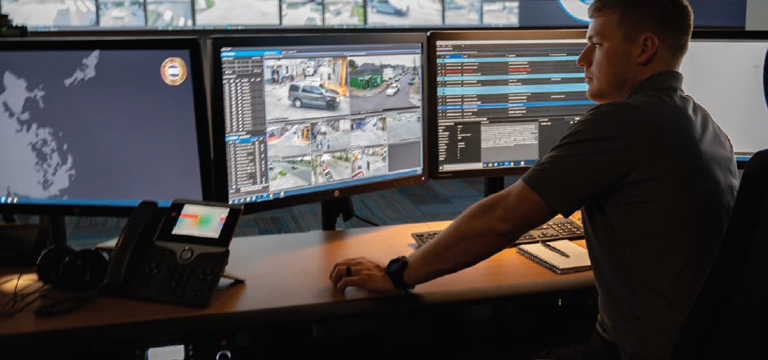As the types of digital content continue to evolve, along with the sources, so do the systems in which they are stored. While the cloud is an excellent option to address your impending need for more storage space, replicating multiple systems in the cloud can make it difficult to take full advantage of economies of scale and potential savings.This doesn’t help when it comes to relieving the pressure on already strained IT budgets.
Managing too many disparate systems with equally disparate workflows, also results in a lack of operational continuity. These different systems typically require their own expertise and staff training, making it difficult for personnel to collect, process, and package evidence for an upcoming case.
So, what can law enforcement agencies do to more effectively manage the flood of digital evidence and support timely and efficient evidence packaging for potential legal action?
Avoid storage silos
The growing popularity of body-worn cameras has made video a popular topic of conversation. In reality, these cameras are just one piece of the advancing technology landscape that is digital evidence. The management of that digital evidence is rapidly evolving as a result of new photos and video from the publics’ smartphones, fixed surveillance video, social media content, and crime scene documentation. There is also evidence that is transitioning from physical in nature to digital, such as witness accounts and statements.
With digital evidence increasing at such a rapid pace, moving data to the cloud is a logical next step. Not only does the cloud provide the scalability needed to support vast amounts of data but it can also reduce IT maintenance and troubleshooting requirements, eliminating the need to monitor and update multiple systems internally.
However, law enforcement agencies are only really able to reap these scale and cost savings benefits if content is consolidated into a single repository. Simply replicating existing systems in a cloud environment results in the same siloed storage approach—with each system maintaining an additive cost. By looking at digital evidence holistically, agencies can take full advantage of economies of scale to reduce long-term storage costs and more affordably meet their needs.
Think “incident first”
Effectively accessing and packaging specific files for case prosecution is another challenge that comes with the rapid growth of digital evidence. It can be an incredibly inefficient process regardless of where data is stored.
As digital evidence evolves, agencies that use a central repository for all types of digital evidence receive important benefits not only tied to cost. A central repository, with the ability to integrate and correlate digital evidence files with already existing information from other technology systems makes it easy to pull disparate content into a single incident evidence package. Valuable points of integration include with a computer-aided dispatch (CAD) and records management system (RMS), but can go even further with radio system integration and other systems too.
This can create a unified incident view, allowing for all relevant digital evidence tied to a single event to be easily found, processed and packaged for judicial partners – saving valuable time and resources that are becoming a growing concern.
Beyond digital evidence: Holistic data management
An all-encompassing approach to storing, processing and sharing data as a whole, allows information to be used in new ways and work more efficiently together. While video, audio, and image files are clearly an important part of case closure, there is other data beyond what is traditionally thought of as digital evidence that is associated with an incident. We touched on this when discussing how data from different information systems, such as CAD and RMS can help present your evidence in an incident-oriented view.
But rather than just connecting to those datasets, centralising the management of all of your data along with your digital evidence can not only be beneficial for continued cost savings and organisation, but also for analysing it together for more intelligence-led decision making.
For example, imagine if an anonymous tip with a picture of a suspicious loiterer was sent in. What if, based on that tip, facial recognition technology could tie the image of the person to a piece of digital evidence attached to an existing record already in your system. This record could give you the suspicious person’s name and any prior offenses they may have. The image, analysis, and digital evidence tied to a record, stored and processed together can facilitate a quicker understanding of the potential threat and in this case avoid a possible incident from occurring.
As access to information continues to grow, agencies who are preparing to expand their digital evidence management beyond bodyworn camera footage will quickly find themselves one step ahead.
Unlock the potential of digital evidence management
As access to information continues to grow, agencies who are preparing to expand their digital evidence management beyond bodyworn camera footage will quickly find themselves one step ahead. One central location for all your digital evidence will allow you to tear down system silos, making evidence storage, processing, and sharing more affordable and efficient. And by selecting the right vendor, this consolidation of digital evidence, leveraged with other datasets, will also start to provide you new advantages.
Reduce costs through economies of scale, enhance efficiencies through integration and create new value for personnel across your operation with digital evidence management built for the future.
For more information on preparing for the future of digital evidence management, visit www.motorolasolutions.com/commandcentralvault





